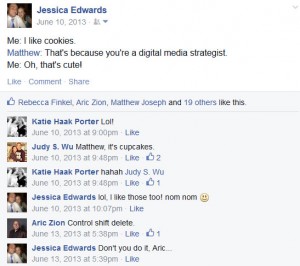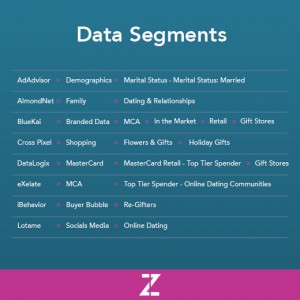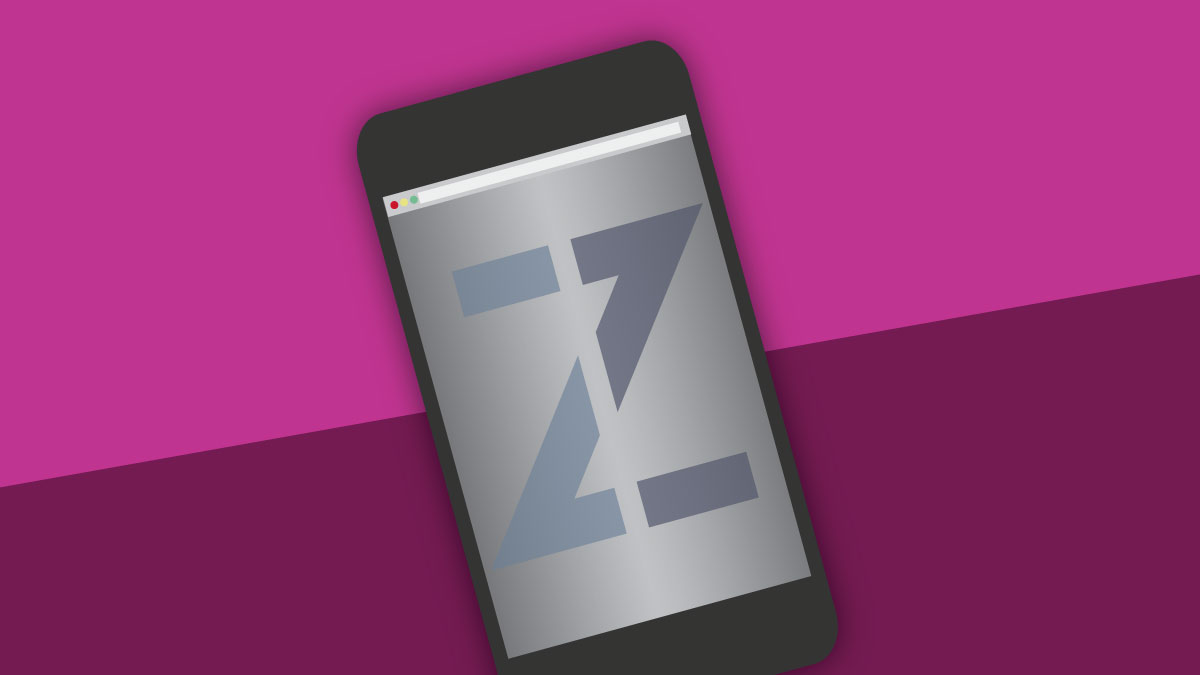The Complete Guide to Display Advertising
Display advertising, or as it’s more commonly paraphrased, “those annoying banners ads that follow me around online,” is a fairly complex landscape. As shown in the /display LUMAscape, the path from advertiser to consumer can be a long and harried one. I’m going to break it down for you so that, given the proper tools, you could plan a display campaign yourself. The advice I’m providing here is a result of the experience that our Phoenix-based interactive agency has accumulated over the years. At the very least, you’ll develop a better understanding of the medium and, dare I say, an appreciation, for how those banners end up on your screen.
The First Display Ad
HotWired was the first website to sell display banners online; it was 1994.
Pretty cool, right? The ad achieved an impressive 44% click through rate – extremely high compared to today’s average rate of 0.1%. High click through rates or not, digital advertising has made a profound impact on the media mix, accounting for 25% of ad budgets in 2013, or $42.38 in the US, only second to TV advertising. Of that $42.38, display accounts for 42%, only second to paid search, which display advertising is predicted to surpass in 2015.
Benefits of Display Advertising
I love a well-targeted ad. Whether or not you feel creeped out that your computer knows you better than your significant other (e.g. that banner ad you just saw, teasing you with the purse you were ogling earlier), display advertising is pretty freaking cool. It allows you to hone in on the exact kind of user that would buy your product/service. You can choose from a wide range of advertising formats, from the humble banner to the sophisticated rich media ad with video and an interactive game built-in!
Data and Targeting
Data is what allows display advertising to be so targeted. The ability to integrate different data sources into a single platform accelerates the speed with which advertisers can gain insight and respond accordingly.

There is so much data being collected by cookies (not the kind you eat #sadface) that allows advertisers to target users by any number of criteria.
Cookies store information about your web browsing experience.
When you go to clear your cache, and hence, delete your cookies, you make it more difficult for advertisers to target you (though not impossible) with relevant ads. But if a publisher has information about you stored on their site (e.g. Facebook), then cookies become unnecessary, and every time you log in, advertisers can target you with any of that information. This is called first-party data.

Facebook is the extreme example of hyper-targeting, because users willingly input so much personal information, e.g. the fact that you’re an 18-year-old female who lives in Los Angeles, likes The Gap, The Humane Society, and the movie Titanic. The more pages you opt-in to, the more that publisher knows about you. It’s never on a personal level, but the publisher will aggregate all of the users that like Titanic, and now that becomes a way to target a group of users, which would be really useful if, say, you were trying to promote another movie with Leo DiCaprio or Kate Winslet.
Third-party data is collected by companies that don’t have a direct relationship with the users from whom they are collecting data. This includes online and offline data. For example, a data provider will place a pixel on publisher sites to understand the user’s web browsing behavior. They may combine that information with offline data sources to create a robust profile, which they bundle with other user profiles who exhibit the same behaviors, e.g. auto-intenders, business travelers, or outdoor enthusiasts. The data providers then sell those bundles to publishers, ad networks, and /DSPs who then layer those data targets onto our media buy for an incremental cost.
Three Ways to Buy Display Advertising
- Direct to Publisher
This is when you buy an ad placement directly with the site. Let’s say you want to buy the Yahoo Homepage ad. You would talk to your Yahoo sales rep, negotiate a rate, send them an insertion order, and execute the ad campaign. If you want a guaranteed placement, direct to publisher is the way to do it. The only challenge with direct to publisher is how time-consuming it can be to execute numerous buys on a multitude of sites.

How do you determine which sites are going to best reach your audience? There are tools to help you. /ComScore is the leader in this field. ComScore uses a panel of users across the country to determine the monthly visitors to each site, and identifies how likely that site is to contain a certain demographic. Here’s an example of a ComScore report:
Panelists actually download an app onto their digital devices, input their demographic information, and then go about their usual web-browsing life. In this way, ComScore can index sites for different audiences. It’s even clever enough to know that your five-year old daughter is using your computer instead of you, based on the pattern of the key strokes.
- Ad Networks
Imagine that you’re a media planner for the moment. You want to reach people who like gluten-free pizza. You may start by placing media on the sites with the greatest reach, such as Yahoo and MSN – this is what the ad industry calls the “short tail,” because it is the first page users hit. But then users leave those sites and visit others, perhaps a gluten-free recipe site, or one of their favorite blogs. These lesser known sites are considered “long tail.” How do you continue to reach a user during their entire online journey? This is where an ad network comes in handy. An ad network aggregates hundreds of sites, both short and long tail, in order to achieve reach and frequency through a single buy.
Most ad networks boast a reach of around 70-85% of the entire internet population. How do these ad networks acquire such reach? Most of them pre-buy, in bulk, ad inventory based on their anticipated needs. They can run your campaign across a number of sites and optimize to the best performing. The downside to an ad network is that it is usually blind, meaning you can’t see which sites your ads are running on. The network wants to protect their publishers. If you were to find out that you were paying $3 CPM for an ad placement on Vogue.com, it would hurt Vogue’s direct sales.
There is another form of an ad network, the transparent one. Media buyers, and their clients, have become dissatisfied with the lack of transparency, so premium ad networks, such as /Undertone and /Lin Digital, have gained popularity. You are given a site list, for which you can whitelist or blacklist any sites. Premium sites—those with fewer ads per page, less clutter, trusted content, etc—have been shown to deliver a higher conversion rate. This certainly has ramifications on the CPM, but if you care about where your ads appear and want to keep your brand in good company, the premium ad network is a good option.
More and more, however, ad network dollars have been shifting to programmatic for its ability to make bidding decisions in real time, based on who the user is, what time of day it is, and how likely they are to convert.
- Programmatic Display
Programmatic is the paid search marketing of display. Media companies, such as /MediaMath, Turn, and /DataXu, have built platforms, called Demand-Side Platforms (DSPs), which allow you to tap into the ad exchanges and bid on impressions in real time. Now you ask, what is an ad exchange? Well, when a publisher can’t sell all of their available ad space, they’ll sell the leftovers to an ad exchange. It’s in the best interest of the publisher to sell as much inventory direct as possible before resorting to an exchange, because they make a much higher profit margin on direct sales. Shared revenue is better than no revenue.
Ad exchanges have become big business, because they make it so easy to buy and sell ads. Programmatic buying is set to account for 63% of display ad spending in 2014 (eMarketer).
DSPs have begun to incorporate what’s called a private marketplace, so now you can buy your site-direct buys and your mass reach buys in a single platform, and at a lower rate than you could buy directly.
Programmatic display is the future of display advertising, because of the efficiency and transparency that it offers.
Most DSPs will show you a site list of where your ads were delivered. Some can even show you conversion data by site. More on conversions later!
Retargeting: Like Taking Candy from a Baby
Website retargeting is when a user visits your site, a cookie stores their information (without any personally identifiable information), and allows you to retarget them when they’re on another website, such as Yahoo, in order to bring them back to your site. Retargeting has always generated the highest conversion rates out of any other display placements. Since the user has already expressed an interest in your brand, it’s really a no-brainer why it works so well. However, on its own, it won’t work quite as well. You’ll need to prospect new users to your site in order for there to be any users to retarget.
Retargeting can get really sophisticated, too. Let’s say you’re a clothing brand, and the user has placed three items in their shopping cart, but he/she never completed the order. With certain retargeting vendors, you can retarget that user with an ad that shows the exact product items that were in their shopping cart. Talk about tempting! /See this retargeting in action.
What goes into an insertion order?
Once you’ve decided which publisher/network/DSP you want to buy an ad from, you’ll need to make a few more decisions.
-
- Channel placement: Which page within the site do you want the ad to be placed on?
- Homepage
- Lifestyle channel
- Finance channel
- Etc.
- Or if it’s a run of network buy or run of exchange (where you’re targeting a particular audience across thousands of sites), then you’ll need to decide what behaviors or context you want your ad to appear for:
- BT (behavioral targeting)—for example, BT Organic Food Lovers will target users who have visited sites and pages about organic foods, but the ad doesn’t necessarily have to be delivered while they’re on the page about organic food—they could be on a page about the weather and our ad would be shown to them, because it’s the audience we care about—not the content.
- CT (contextual targeting)—in contrast, contextual targeting insists that the ad be placed next to content that you are targeting, e.g. organic food. The thought here is that users will convert better while that topic is top of mind; however the downside is that you may not achieve the frequency necessary to reach your target audience, or the CPM may be higher, because there isn’t as much inventory available.
- Demographic Targeting is another common way to buy display media. You can target sites that index highly for your target audience, e.g. Women 25-34, with a household income of $100k+.
- Ad format: What size ad do you want to buy?
- Channel placement: Which page within the site do you want the ad to be placed on?
This gets back to the objective of the campaign—do you want to deliver high impact for a short-lived promotion, or do you have an evergreen campaign that will generate conversions over time? In the case of the first objective, you’ll want to focus on larger, rich media formats, which cost more, but are the best way to get the message out in a short period of time.
-
-
- Here are some example formats for high impact/rich media:
- Homepage takeover (page skin and all banners on page)
- /Rising star formats, such as: Pushdown, Sidekick, Filmstrip, etc.
- For some really cool creative examples, visit /Undertone’s gallery
- In the case of the second objective, you’ll want to consider more standard formats, such as:
- 300×250
- 728×90
- 160×600
- 300×600
- Here are some example formats for high impact/rich media:
-
The benefit of running a longer campaign is the ability to optimize across placements and ad formats over time, so that you can continually improve your cost per acquisition.
-
- Buying Metrics: How should you buy your ads?
- CPM (cost per thousand impressions)
- CPC (cost per click)
- CPA (cost per acquisition)
- Flat cost (no matter how many impressions are delivered, the cost is fixed)
- Buying Metrics: How should you buy your ads?
Again, this is dependent on your objective, and some publishers will only offer one metric. The benefit to display advertising is that you can test it. You may find that the effective CPA is actually lower when you buy on a CPM metric, rather than directly buying on a CPA metric. Also, most publishers require a test on a CPM buy first, in order to determine what CPA they can offer you and still generate profit.
Ad-serving: Bringing it All Together
In the old days (you know, the 90s), digital media buyers would request delivery reports from each publisher, hoping with all their heart that they were telling the truth, and aggregate them for the client. Nowadays, we have a 3rd party ad-server to do the dirty work. /DoubleClick (a Google product) and /Mediamind (now called Sizmek) are the leading players in this industry.
An ad-server lets you traffic the display ads, input the media plan, send creative tags to publishers, and report on the campaign by date, placement, and creative with data up to the last 24-hours (sometimes faster). It also lets you track post-click conversions (after a user has clicked a banner) and post-view conversions (after a user has seen a banner, but not clicked). Don’t ask me how—it’s magic! The gist of it is that you place a piece of code on the advertiser’s website, specifically on key pages, like the homepage, shopping cart page, and order completion page. The ad-server tracks which publisher delivered the ad that ended in the user completing a sale. It’s the envy of every other medium out there.
Optimization
The ad-server lets us know which publishers are performing and which are not. Enter optimization. You can set up daily reporting within the ad-serving platform to send you impressions, clicks, click through rate, cost per click, and cost per conversion, so that you know how your campaign is performing, and which publishers are more cost effective. You fire off a few choice emails, and get the optimization train started!
In Summary
The ability to track everything online is both a blessing and a curse. We still have that age-old problem of not being able to track through to physical store sales. In that case, we get creative and look at other metrics, like did the user visit the location page? How long were they on the site? How many pages did they view? Micro-conversions can be an indicator of purchase intent as well.
Display advertising has come a long way since 1994, and that was a mere 20 years ago! There are a number of ways to buy display media, but don’t feel discouraged. Media planners are here to help. We have the tools and the expertise to make the most informed buy. And hey, if the campaign starts off a little shaky, you can be assured that we will optimize the heck out of it. 😉
